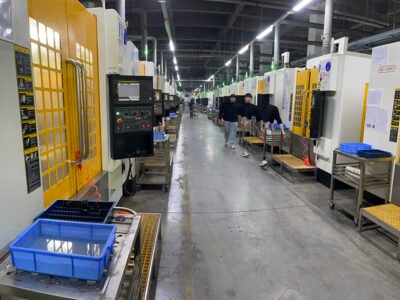ferritic stainless steel investment casting

Ferritic stainless steel investment casting is a process that has been widely used in various industries due to its excellent performance and cost-effectiveness. In this article, we will discuss the basic principles of ferritic stainless steel investment casting, its applications, advantages, and challenges. We will also provide a detailed explanation of the production process, quality control, and the future development trends of this casting technique.
I. Basic Principles of Ferritic Stainless Steel Investment Casting
1.1. Definition
Ferritic stainless steel investment casting is a casting process that uses a ceramic shell mold to cast ferritic stainless steel. The process involves the preparation of a ceramic shell mold, the filling of molten steel, and the solidification and cooling of the casting.
1.2. Basic Process
The basic process of ferritic stainless steel investment casting includes the following steps:
(1) Pattern making: The pattern is made of wood, plastic, or metal, which is used to form the ceramic shell mold.
(2) Mold making: The pattern is placed in a flask, and refractory materials are packed around it to form a mold.
(3) Shell making: The mold is heated and then coated with a ceramic slurry. After drying and baking, the shell is formed.
(4) Filling: The shell is placed in a casting pit, and molten ferritic stainless steel is poured into the shell.
(5) Solidification and cooling: The casting is allowed to solidify and cool down in the shell.
(6) Demolding and finishing: The casting is removed from the shell, and the surface is machined and polished.
II. Applications of Ferritic Stainless Steel Investment Casting
2.1. Automotive Industry
Ferritic stainless steel investment casting is widely used in the automotive industry for manufacturing engine components, exhaust systems, and other parts due to its high strength, corrosion resistance, and good thermal stability.
2.2. Aerospace Industry
The aerospace industry also utilizes ferritic stainless steel investment casting for manufacturing engine parts, turbine blades, and other critical components due to its high strength and heat resistance.
2.3. Chemical Industry
Ferritic stainless steel investment casting is used in the chemical industry for manufacturing equipment such as reactors, valves, and pumps, which are exposed to harsh chemical environments.
III. Advantages of Ferritic Stainless Steel Investment Casting
3.1. High Dimensional Accuracy
Ferritic stainless steel investment casting can achieve high dimensional accuracy and complex shapes, which is beneficial for reducing the need for subsequent machining.
3.2. Good Surface Quality
The ceramic shell mold provides a smooth and clean surface for the casting, which can reduce the need for surface treatment.
3.3. Cost-Effective
Compared with other casting methods, ferritic stainless steel investment casting has lower production costs and shorter lead times.
3.4. Good Mechanical Properties
Ferritic stainless steel has excellent mechanical properties, such as high strength, good plasticity, and corrosion resistance.
IV. Challenges of Ferritic Stainless Steel Investment Casting
4.1. Shrinkage
During the solidification and cooling process, ferritic stainless steel investment casting may experience shrinkage, which can affect the dimensional accuracy and mechanical properties of the casting.
4.2. Cracking
Cracking may occur during the casting process due to the high temperature difference between the molten steel and the ceramic shell mold, which can lead to reduced casting quality.
4.3. Porosity
Porosity is a common defect in ferritic stainless steel investment casting, which can be caused by improper mold preparation, filling, or cooling.
V. Quality Control of Ferritic Stainless Steel Investment Casting
5.1. Pattern Quality
The quality of the pattern directly affects the quality of the casting. Therefore, it is necessary to ensure that the pattern has good dimensional accuracy, smooth surface, and proper draft angle.
5.2. Mold Quality
The quality of the mold is crucial for the casting process. The mold should be made of high-quality refractory materials, and the shell should be dense, uniform, and have good strength.
5.3. Filling Process
The filling process should be controlled to ensure that the molten steel fills the mold completely and evenly, reducing the occurrence of defects.
5.4. Cooling Process
The cooling process should be controlled to prevent cracking and ensure the mechanical properties of the casting.
VI. Future Development Trends of Ferritic Stainless Steel Investment Casting
6.1. Advanced Materials
The development of new refractory materials and ceramic materials will improve the quality and performance of the ceramic shell mold, leading to better casting results.
6.2. Automation
The application of automation technology in the casting process will improve production efficiency, reduce labor costs, and ensure casting quality.
6.3. Computer Simulation
Computer simulation technology can be used to optimize the casting process, predict casting defects, and improve casting quality.
6.4. Environmental Protection
The development of environmentally friendly casting materials and energy-saving casting processes will reduce the environmental impact of ferritic stainless steel investment casting.
VII. Frequently Asked Questions
1. What is the difference between ferritic stainless steel investment casting and other casting methods?
Ferritic stainless steel investment casting can achieve higher dimensional accuracy and better surface quality compared with other casting methods, such as sand casting and die casting.
2. What are the advantages of ferritic stainless steel investment casting?
The advantages of ferritic stainless steel investment casting include high dimensional accuracy, good surface quality, cost-effectiveness, and excellent mechanical properties.
3. What are the main applications of ferritic stainless steel investment casting?
Ferritic stainless steel investment casting is widely used in the automotive, aerospace, and chemical industries for manufacturing engine components, exhaust systems, turbine blades, and other equipment.
4. What are the main challenges in ferritic stainless steel investment casting?
The main challenges include shrinkage, cracking, and porosity, which can be caused by various factors such as mold quality, filling process, and cooling process.
5. What are the future development trends of ferritic stainless steel investment casting?
The future development trends include the use of advanced materials, automation, computer simulation, and environmental protection.
